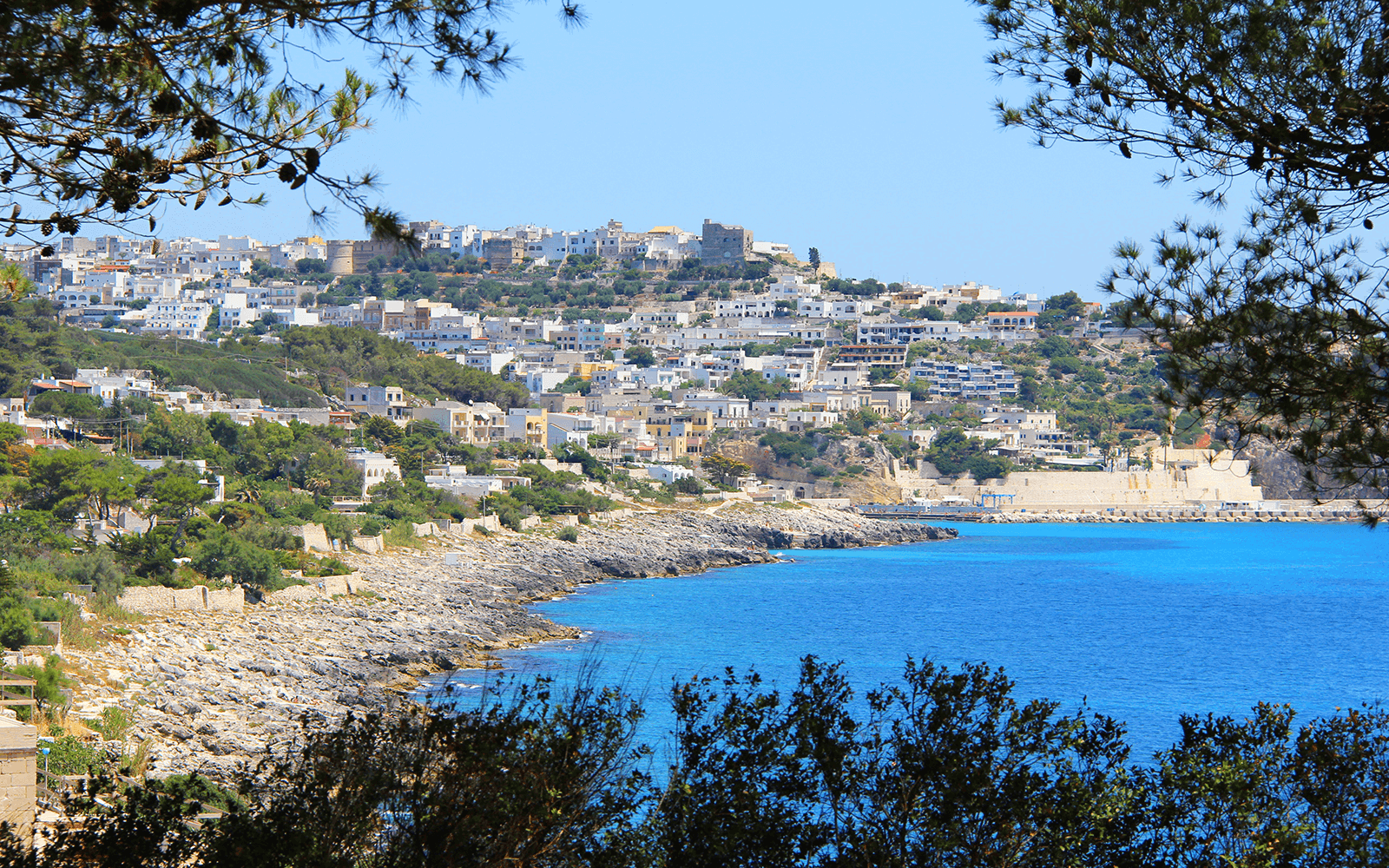Make your way to the very heel of Italy’s boot to discover the lesser-known, yet spectacular seaside secrets of coastal Puglia. With the longest stretch of coast in peninsular Italy, prepare yourself for endless shades of brilliant blue, unspoiled local beaches, and ancient towns along the way.

Beaches and Caves
Hidden along the Salento coastline are some of Italy’s finest and most undiscovered sandy beaches and coves. Follow any path or sheep-tracked trail and you’ll find beaches and bays washed clean by the shimmering, crystal-clear waters of the Adriatic. Away from the bustle of the busy tourist spots, the Salentino coast has Italy’s cleanest waters and best beaches.
The coastline also boasts numerous fascinating and important caves. In 1970, Grotta dei Cervi (“Cave of Deer”) was discovered at Porto Badisco. Although not open to the public due to its fragile nature, the cave extends inland more than a kilometre (just over half a mile) to a depth of 20 metres. It contains one of Europe’s most remarkable collections of Neolithic art.
Further south is Grotta Romanelli, discovered in 1879 and dating back some 11,000 years, which features the Palaeolithic masterpiece of an ox hit by various spears.

Santa Cesarea Terme
The seaside town of Santa Cesarea Terme boasts sulphurous sodio-iodic thermal hot springs found in four natural cavities on a cliff over the main sea. These cave waters are an important part of the town’s economy, which focuses on the therapeutic properties of the thermal waters. Various highly sought-after mineral bath and mud treatments are offered at spas throughout the town.
Among the art nouveau and Far Eastern-style architecture of the town centre is the Moorish Villa Sticchi. Built in 1885, today the villa is a private residence that captures the splendour of the coast.

Castro
Castro and Castro Marina are situated in one of the most beautiful bays of the entire Puglia coast. The ancient town of Castro is 98 metres (321 feet) above sea level with a strategic panoramic view of the Adriatic Sea. Castro Marina, sitting at 25 metres (82 feet) above sea level, served the ancient harbour. Founded by the Cretans during Roman times, the city and port maintained their prominence for trade and defence throughout the Middle Ages. Once again, the city and its architecture were refortified after the Turkish invasion in the 16th century.
Close to Castro, the 150-metre-long (492 feet) Grotta Zinzulusa contains two freshwater lakes, stalagmite and stalactite formations, and its own unique ecosystem: living in the caves is a small shrimp-like animal with long antennae that scientists believe has existed for over 200,000 years.

Santa Maria di Leuca
The extreme tip of the heel of the Italian peninsula is traditionally believed to be the place where St. Peter landed in Italy to evangelize to the Italians. The location has always been considered a sacred site, the place where the Roman temple to Minerva once stood. In 1694, a Corinthian column was constructed and a sanctuary was built for pilgrims who wanted to retrace St. Peter’s steps. The sanctuary was destroyed several times by the Turks, but has been always rebuilt and remains a popular pilgrimage destination.







